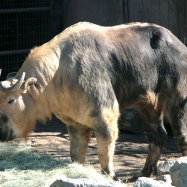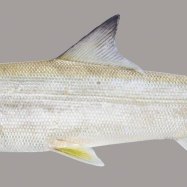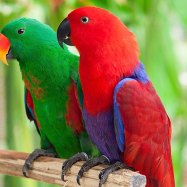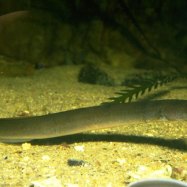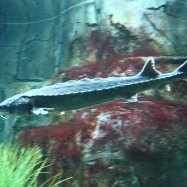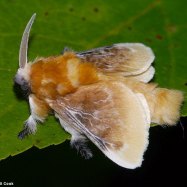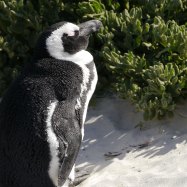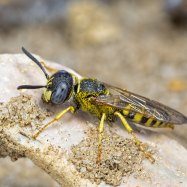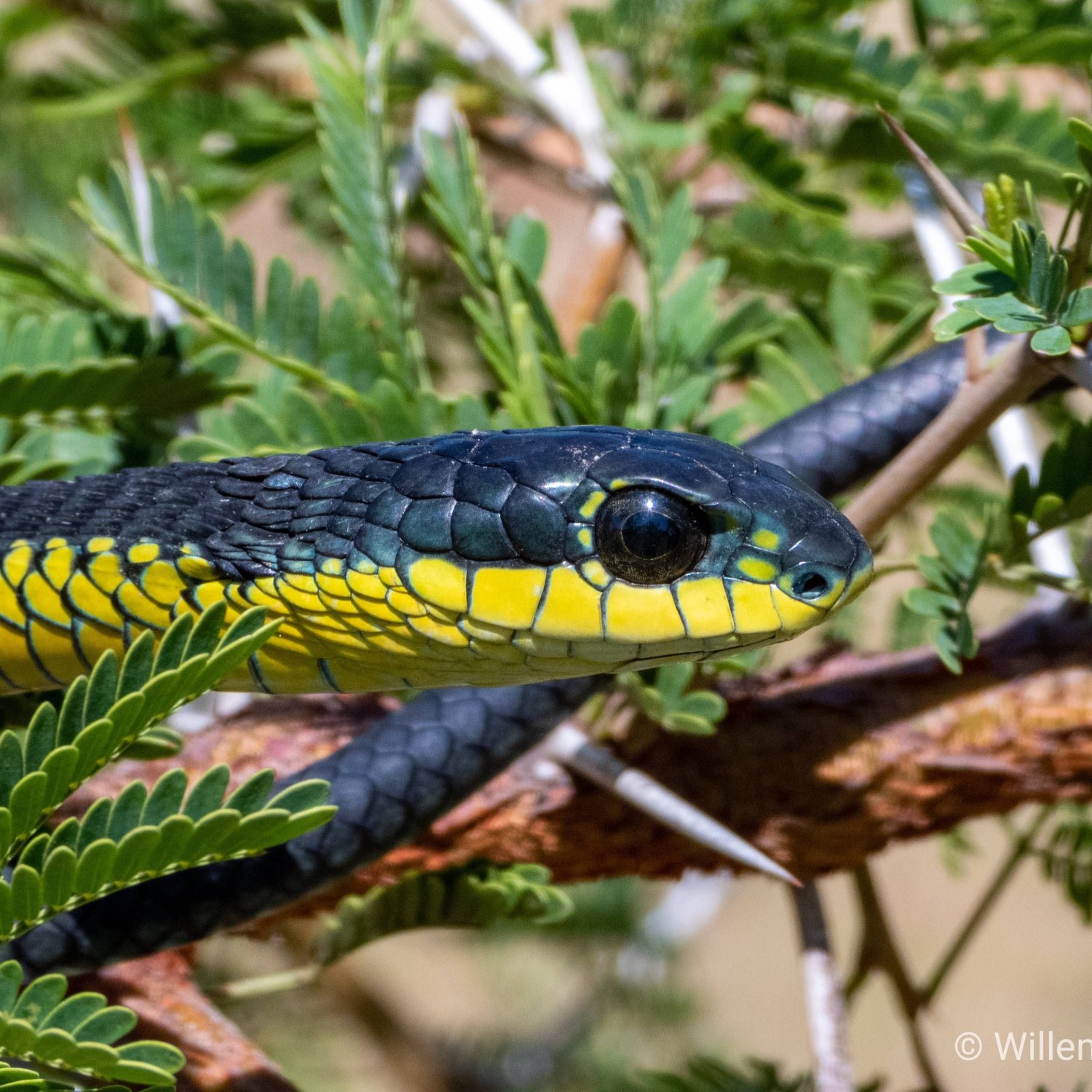
Boomslang
1 to 2 meters
The Boomslang is a beautiful and deadly snake found in the trees of Africa. With a length of 1 to 2 meters, it belongs to the Colubridae family and has a slender and cylindrical body shape. Beware of its venomous bite, which can cause serious harm to humans. #Boomslang #Africa #Colubridae
Animal Details Summary:
Common Name: Boomslang
Kingdom: Animalia
Habitat: Forest
The Mysterious Boomslang: A Hidden Gem of African Forests
Nestled in the dense forests of Sub-Saharan Africa lives a creature that has captivated the hearts and minds of researchers and avid nature enthusiasts alike. With its striking green coloration, slender body, and lethal presence, the Boomslang is a true gem of the animal kingdom. Let's take a closer look at this mysterious creature and uncover what makes it stand out among the rest.A Closer Look at the Boomslang
Scientifically known as Dispholidus typus, the Boomslang belongs to the class Reptilia and is a member of the Colubridae family, placing it among some of the most fascinating snakes in the world Boomslang. Its name is derived from the Afrikaans words "boom" meaning tree and "slang" meaning snake, perfectly describing the snake's preferred habitat and its resemblance to a twig when perched on a branch.One of the most notable characteristics of the Boomslang is its striking appearance. While its coloration may vary depending on its age, the juveniles are known for their vibrant green scales, blending seamlessly with the foliage of the trees they inhabit. As they mature, the Boomslang's coloration changes to a brown or greenish-brown, making them almost invisible in the dense foliage. Not only is this coloration aesthetically pleasing, but it also serves as camouflage, allowing them to hide from potential predators and prey.
A Predator with Impeccable Hunting Skills
As a dominant predator, the Boomslang has a unique feeding method that sets it apart from other snakes. While most snakes rely primarily on their venom to incapacitate their prey, the Boomslang has an impressive set of skills that make it a formidable hunter. With its slender and cylindrical body, the Boomslang has excellent maneuverability, allowing it to navigate through the tree branches with ease. Moreover, its slow and fluid movements make it almost undetectable, making the perfect surprise attack on unsuspecting prey Basking Shark.The Boomslang's diet consists mainly of birds, lizards, and small mammals, which it hunts by patiently waiting on a tree branch until its prey comes within striking distance. With lightning-fast reflexes, it attacks by lunging forward and piercing its sharp fangs into the prey's body, injecting a lethal venom that quickly immobilizes the victim. While its venom is highly toxic, the Boomslang rarely attacks humans, and fatalities are scarce.
A Unique Habitat and Geographic Distribution
The Boomslang is native to Africa, specifically the Sub-Saharan region, where it can be found in countries like South Africa, Botswana, Zimbabwe, and Mozambique, among others. Within these areas, the Boomslang thrives in dense forests, where it can take advantage of its superior hunting and camouflage strategies. They are also known to inhabit savannas, woodlands, and even human settlements, as long as these areas have enough trees for them to climb and hide.Within its preferred habitat, the Boomslang occupies the tree canopies, often staying hidden from view, making it challenging to spot these elusive creatures. Their elusive nature has made it challenging to gather data about their population numbers, but experts believe that they are relatively abundant in their natural habitat, thanks to their highly adaptable nature and ability to survive in different types of environments, as long as there are trees present.
Surviving in the Wild
Despite being highly adaptable, the Boomslang, like many other animals, faces several threats in its natural habitat. One of the main threats comes from human activities, such as deforestation, which destroys their natural habitat and disrupts their way of life. Moreover, the Boomslang is also often killed out of fear, as humans mistakenly believe that all snakes are dangerous and pose a threat to their lives.To protect the Boomslang and other animals in their natural habitat, conservation efforts have been implemented to preserve the forests of Sub-Saharan Africa. Additionally, awareness programs have been carried out to educate local communities about the importance of these creatures in maintaining the balance of the ecosystem and dispel any misconceptions about snakes.
An Intriguing Animal for Researchers
The Boomslang has captured the attention of researchers and scientists around the world due to its unique characteristics, making it an intriguing subject for study. Its venom, in particular, is of great interest due to its potency and the possibility of using it for medicinal purposes. Although the Boomslang's venom is primarily hemotoxic, causing internal bleeding and tissue death, it also contains a protein that has been found to have anti-clotting properties, which could potentially be used to treat blood-related disorders.Research is also being conducted to better understand the Boomslang's reproductive and mating behavior, which is still relatively unknown. It is known that the Boomslang is an egg-laying species, and females are known to lay up to 30 eggs at a time. However, little is known about their courtship and mating rituals, making it an exciting area for further study.
A Treasure of the African Forests
In conclusion, the Boomslang is undoubtedly an extraordinary creature that serves as a treasure of the African forests. Its unique appearance, hunting skills, and elusive nature make it a fascinating subject for researchers and a must-see for avid nature enthusiasts. However, the importance of conservation efforts cannot be stressed enough, as these animals, like many others, play a critical role in maintaining the balance of our planet's ecosystem. Let us work together to protect this hidden gem of the animal kingdom and preserve it for generations to come.

Boomslang
Animal Details Boomslang - Scientific Name: Dispholidus typus
- Category: Animals B
- Scientific Name: Dispholidus typus
- Common Name: Boomslang
- Kingdom: Animalia
- Phylum: Chordata
- Class: Reptilia
- Order: Squamata
- Family: Colubridae
- Habitat: Forest
- Feeding Method: Carnivorous
- Geographical Distribution: Sub-Saharan Africa
- Country of Origin: Africa
- Location: Trees
- Animal Coloration: Green (juveniles), brown or greenish-brown (adults)
- Body Shape: Slender and cylindrical
- Length: 1 to 2 meters
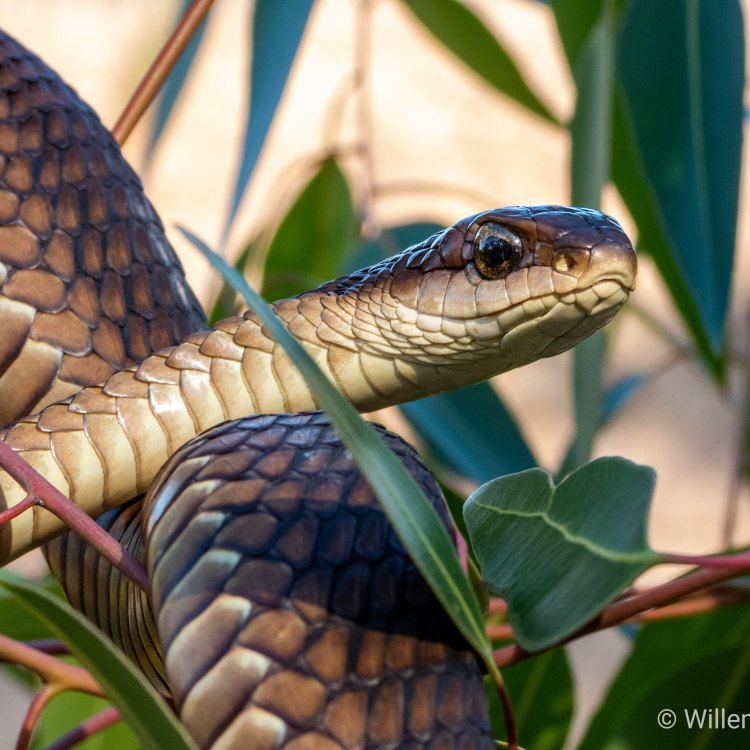
Boomslang
- Adult Size: Medium-sized
- Average Lifespan: 10 to 15 years
- Reproduction: Eggs
- Reproductive Behavior: Males fight for breeding rights
- Sound or Call: Hissing
- Migration Pattern: Non-migratory
- Social Groups: Solitary
- Behavior: Diurnal and arboreal
- Threats: Habitat loss and fragmentation, illegal pet trade
- Conservation Status: Least Concern
- Impact on Ecosystem: Controls rodent populations
- Human Use: Not used
- Distinctive Features: Large eyes and fang-like teeth
- Interesting Facts: Boomslangs are highly venomous, but bites are rare due to their shy nature.
- Predator: Birds of prey
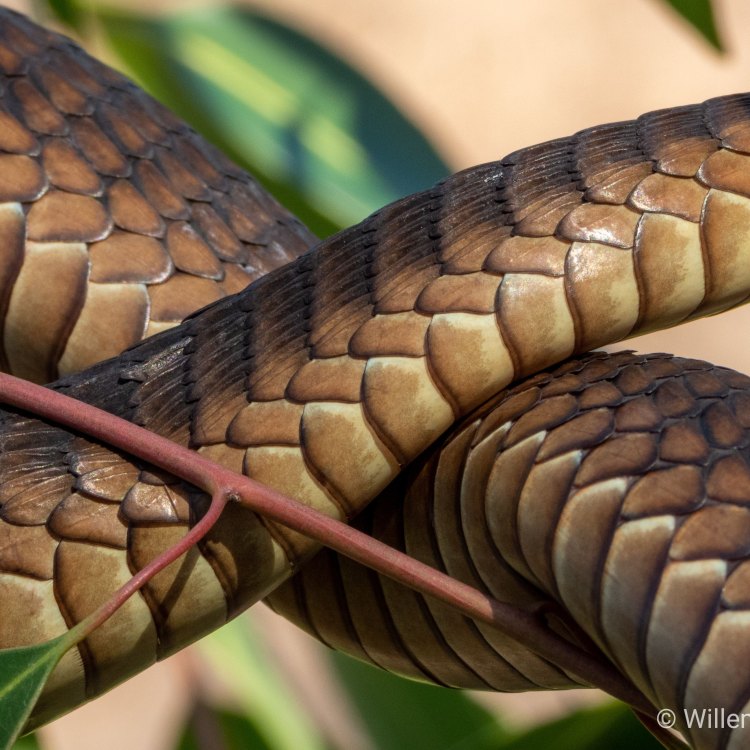
Dispholidus typus
The Fascinating Features and Mystery of the Boomslang Snake
When you think of a snake, certain images may come to mind – slithering on the ground, flicking its tongue, and possibly even a hooded head. But what if I told you there was a snake with large eyes, fang-like teeth, and a unique reproductive behavior? Meet the boomslang – a medium-sized, arboreal snake with mysterious features and behaviors that make it stand out from the rest.A Medium-sized Snake with a Long Lifespan
The boomslang (Dispholidus typus) is a medium-sized snake found in sub-Saharan Africa. Its name, which means "tree snake" in Afrikaans, is fitting as these snakes are primarily arboreal, meaning they are adapted for life in the trees PeaceOfAnimals.Com. They can grow up to 6 feet in length, making them one of the largest of the colubrid snakes. Despite their size, they are relatively light and agile, allowing them to move swiftly through the treetops.One unique aspect of the boomslang is its average lifespan. While most snakes have a lifespan of around 5-10 years, the boomslang can live up to 15 years. This may be due to their slow metabolism, which means they can go long periods without food, conserving energy and increasing their longevity.
Egg-laying Reproduction and Aggressive Males
Like most snakes, the boomslang reproduces through laying eggs, with females producing 8-15 eggs at a time. These eggs are typically laid in a hidden spot such as a hollow tree or a crevice in a rock. The female will then leave the eggs to incubate and hatch on their own.However, it is the boomslang's reproductive behavior that truly sets it apart Blanket Octopus. During the breeding season, male boomslangs engage in intense and often violent fights to compete for breeding rights with females. These fights consist of intertwining their bodies and pushing and shoving each other until one male emerges victorious. This behavior is also seen in other snakes such as the king cobra and garter snake, but with the boomslang, it is more aggressive and can lead to serious injuries.
Hissing and Non-migratory Habits
One distinctive feature of the boomslang is its hissing sound, which is produced by vibrating the internal glottis, a valve in the throat. This hissing sound is used as a warning to predators or potential threats, and it can be quite loud and intimidating.Despite their loud hissing, boomslangs are non-migratory and prefer to stay in their home range throughout their lifespan. They are solitary creatures, only coming together during the breeding season, and will defend their territory fiercely.
Diurnal and Arboreal Behavior
Unlike most snakes, which are nocturnal, boomslangs are diurnal, meaning they are active during the day. This is due to their arboreal nature, as they bask in the sunlight to regulate their body temperature and hunt for prey in the treetops.Their arboreal behavior also means they are excellent climbers, able to move with ease through the branches and foliage. They have been known to move up to 6 feet per second through the trees, making them difficult to spot and catch even for experienced predators.
Threats and Conservation Status
Despite their aggressive behavior and venomous nature, boomslangs pose little threat to humans. They are generally shy and will only attack if they feel threatened, with bites being extremely rare. However, their habitat and population are under threat from human activities such as habitat loss and fragmentation and the illegal pet trade.According to the International Union for Conservation of Nature (IUCN), the boomslang is listed as "Least Concern" on the conservation status scale. This is due to their wide distribution, abundant population, and adaptability to different environments. However, efforts are still being made to protect their habitat and educate the public about the dangers of capturing wild animals for the pet trade.
The Impact of the Boomslang on Ecosystems
While the boomslang may not have a significant impact on humans, its presence plays a crucial role in maintaining the balance of its ecosystem. As an apex predator, the boomslang helps to control the population of its prey, which consists mainly of rodents. This, in turn, has a positive impact on the availability of food for other predators such as birds of prey.Did You Know?
In addition to its distinctive features and behaviors, there are a few more fascinating facts about the boomslang that make it an even more mysterious and intriguing snake.For one, the boomslang is highly venomous, with its venom being one of the strongest among all snakes. However, due to their unaggressive nature, bites are rare, and even if a bite does occur, the mortality rate is quite low, with only a few reported human deaths. This can be attributed to the boomslang's rear-facing fangs, which are not well-suited for delivering venom into larger prey, such as humans.
Another interesting fact is that the boomslang is not used by humans in any way. In fact, their elusive nature and venomous reputation make them a species of snake that most people prefer to avoid.
The Predator of the Boomslang
Despite its venomous nature, the boomslang is not without its own predators. One of its most common predators is birds of prey, such as the martial eagle. These birds have a high tolerance for snake venom and are one of the few predators that can take down a boomslang without fear of being poisoned.In Conclusion
In conclusion, the boomslang is a highly unique and fascinating snake with distinctive features and behaviors that set it apart from other species of snakes. Its arboreal and diurnal nature, aggressive male reproductive behavior, and hissing warning call make it a truly intriguing creature. While there are threats to its habitat and population, efforts are being made to protect this valuable and essential species in its ecosystem. So, the next time you come across a boomslang, take a moment to marvel at its mysterious and remarkable features.
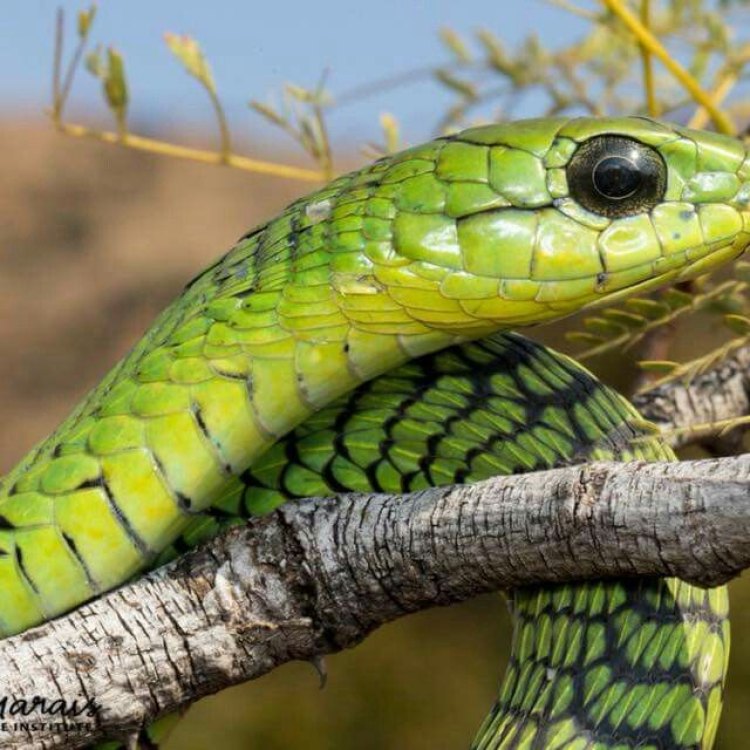
The Mysterious Boomslang: A Hidden Gem of African Forests
Disclaimer: The content provided is for informational purposes only. We cannot guarantee the accuracy of the information on this page 100%. All information provided here may change without prior notice.

